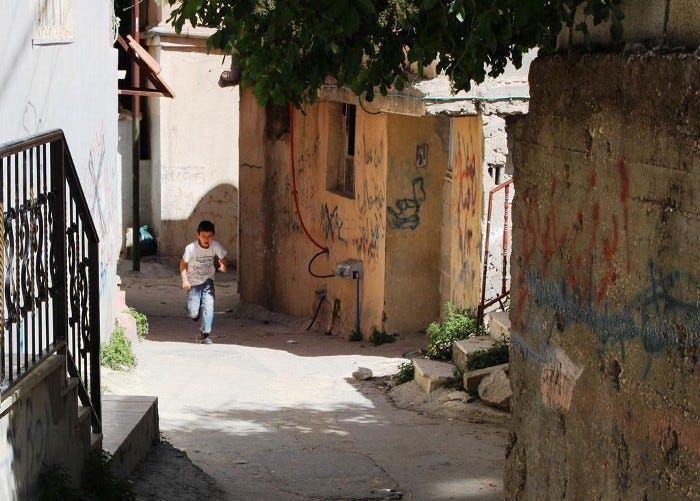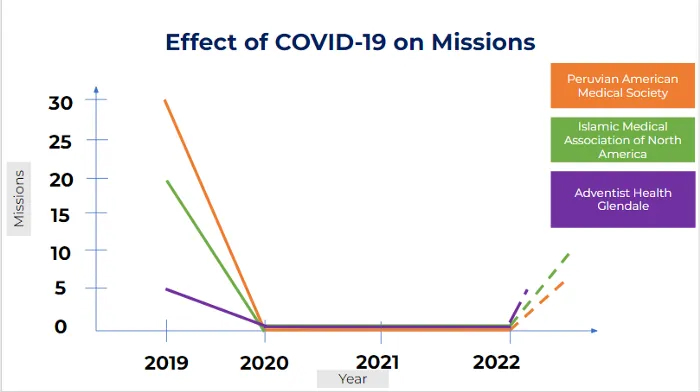The world is going through a transition period when almost every industry is shifting to online platforms. However, a large number of social service departments, most importantly healthcare, have been unable to keep up with the fast-paced transition due to improper infrastructure and a lack of resources.
As a result, we are observing increasing difficulties in healthcare provision for underprivileged and deprived regions around the globe. Moreover, during the pandemic, while all international borders were closed, and flights were put to hold, the challenges escalated. Healthcare organizations couldn’t send doctors and providers to medical missions for these areas which needed them the most.

Etizaz Shah — founder and CEO at Ophy Care — highlighted these issues faced by medical organizations and proposed telemedicine as the solution to overcome them during his talk at the NAAMA 44th National Medical Convention held on September 2–5.
Challenges Faced by Organizations during Medical Missions
Arguably, the communities that need healthcare aid the most are refugee camps and immigrant populations. These people have left their native cities/countries hoping to find a better lifestyle that wouldn’t deprive them of the basic needs of life.
“Right before Covid 19, I had a chance to go to Palestine. We went to a refugee camp, that’s called Dheisheh Camp. It was built in 1949 during the Arab-Israel conflict. People from 45 villages escaped from Western Jerusalem and the West of Hebron to seek refuge in this area. Though the camp was originally built for 3,000 people. Now, over 17,000 people are living in an area of 0.33 sq km,” said Etizaz Shah sharing his experiences.

“During this visit, we went to UNRWA Medical Camp and discovered that there was only one doctor who was responsible for all age groups, all genders, and all types of diseases in this population.”
This immense gap is caused mainly because of two reasons. The first one being that doctors typically don’t like to visit conflicted areas like Palestine, as it can involve several life-threatening risks.
Second, medical missions can be really costly. Around $11,000 is required to send one physician on a short-term medical mission. This includes airfare, organization fees, equipment fees, opportunity cost, and more. As a result, the total annual spending by the US on medical missions stands around a whopping $3.7 billion.
Impact of Covid 19 on Medical Missions
After the pandemic, like the rest of all industries, social healthcare and medical mission organizations were hit hard. The already insufficient number of medical missions was reduced literally to zero.
Consequently, the health systems of numerous countries, which depended on these medical missions, collapsed. The few doctors available in these areas were overwhelmed by the number of patients that needed professional medical treatment.
According to a survey done by the Ophy Care team, before Covid 19, the Peruvian American Medical Society used to organize 20–30 medical missions every year, while the Islamic Medical Association of North America was doing around 20 missions, and Adventist Health Glendale was doing almost 4 medical missions annually.

However, during the pandemic, the medical missions organized by these three organizations, along with the rest, went straight to zero. On top of that, this situation remained the same for almost two and a half years.
How Telemedicine Helped Overcome Health Provision Barriers?
During the 30-month-lockdown period, when no medical organization or doctor could physically travel to help the people in countries with inadequate healthcare systems, telemedicine gradually started gaining attention.
During the pandemic, several organizations around the globe set up their digital model and began providing services through online platforms. Not only it helped them tackle the challenges presented by Covid 19, but they observed overall a much-improved efficiency even when compared to their performance before the virus.
Probably the best example, in this case, is the Peruvian American Medical Society (PAMS). It’s a small organization that was trying to provide healthcare services to the people in Peru during the pandemic. The country had the highest deaths worldwide per one million population due to the virus. As a result, the government had to close all the borders and shut down all the flights, which made it almost impossible for PAMS to help the citizens there.
Soon enough, the organization realized that it could approach people and help them through online applications, such as WhatsApp and Google Forms. However, due to the massive number of patients that needed professional help, managing the medical missions through WhatsApp became impossible.
PAMS then decided to host a webinar to teach Peruvian doctors how to treat Corona patients in ICU. The webinar was held in May 2020, and surprisingly, over 1,000 doctors attended it. After this success, they started doing regular webinars for different training sessions. These webinars by PAMS are now attended by almost 7,000 physicians from 23 different countries.
“Look at the power of telemedicine. How a small organization that was helping people in a couple of villages, ended up building a system and infrastructure where they are now helping doctors in 23 countries,” said Shah.
Is Telemedicine the Future?
According to a survey done by the Catholic Health Association of the United States, two of the biggest challenges faced by medical mission providers are funding and sustainability. The report also shows that providers are mainly focused to maintain continuity of services and establish relationships with the host community through short-term physical medical missions.
Fortunately, telemedicine solves both these issues cost-effectively and time-effectively without compromising on quality. Through these platforms, providers don’t need hefty funding to approach and connect with patients. On top of that, they can maintain the continuity of service as long as the internet is available at both ends.
Considering it all, we can comfortably say that, in the coming years, more and more organizations and healthcare companies are going to shift their work model to digital health and telemedicine platforms.
In fact, a considerable number of telemedicine companies have already established their foundations in the industry. However, if you are looking for a healthcare platform that can handle multiple medical missions in parallel , Ophy Care is the way to go. Ophy Care uses a proprietary telehealth platform to deliver high-quality culturally and linguistically relevant healthcare to underserved populations.
Learn about the potential of Ophy Care to deliver medical care in native languages to create a new model for expanding the impact of medical missions.


